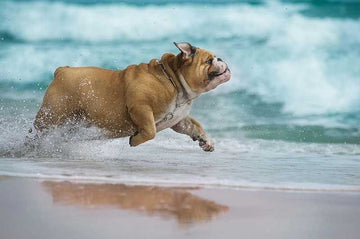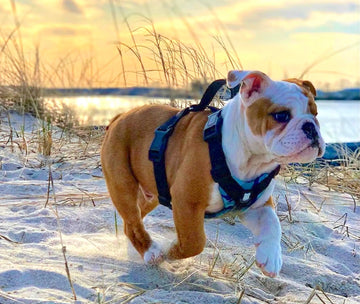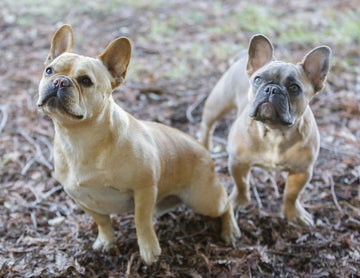The Fine Art of Exercising Your Bulldog
Bulldog owners are a unique breed. Once you fall in love with a Bulldog, you’re hooked for life. We embrace the stubborn quirks, the 50-pound “lap dog” moments, the wrinkle cleaning and ear checks, and yes—the symphony of snores. Loving a Bulldog means understanding their character and having total patience for their unique needs.
Among the most important daily habits is safe, Bulldog-smart exercise. If you’re new to the Bulldog community—or just want a refresher—here’s what matters most.
Bulldogs Do Benefit from Exercise
Bulldogs absolutely need regular activity. Consistent, moderate exercise supports healthy weight, joints, digestion, sleep, and overall mood. A healthy Bulldog is a happy Bulldog—and life is better for both of you.
How Much? Keep It Moderate
Every Bulldog is different, but for most adults, about 20 minutes a day is plenty—no more than 40 minutes on mild-weather days. Strenuous play should be limited to short bursts of 10–15 minutes.
Mix it up: two 10-minute walks, a few minutes of fetch or tug, light wrestling, puzzle toys, or playtime with a compatible dog. Bulldogs get bored quickly—find what they love and make it part of the routine.
Think in Spurts, Not Marathons
Bulldogs are brachycephalic (short-headed), which can make breathing and heat dissipation tougher. Many live full, happy lives by pacing activity smartly: short sessions, frequent breaks, and close monitoring of breathing effort. If your vet has discussed BOAS (Brachycephalic Obstructive Airway Syndrome), follow their specific guidance for intensity and duration.
Heat Safety: Bulldogs Are Prone to Overheating
Because dogs cool primarily by panting, Bulldogs need closer monitoring—especially in warm or humid weather. Avoid the hottest parts of the day. Aim for early morning or evening walks, stick to shade, and bring water.
Create a simple warm-weather kit: a collapsible bowl, cool water, a few clean cloths, and access to AC or a fan after activity. If you suspect heat stress, end activity immediately and contact your veterinarian.
Signs of heat stress may include:
- Dark or very bright red tongue/gums
- Excessive or noisy panting; drooling
- Weakness, wobbling, or disorientation
- Glassy eyes, collapse, or fainting
Be proactive—plan around weather and keep sessions short. Heatstroke can happen fast in brachycephalic breeds.
Why Standard Collars & Typical Harnesses Fail Bulldogs
Walks are the best everyday exercise, but the right equipment matters. Never use a collar and leash alone for walks—Bulldogs’ thick necks and airway anatomy make neck pressure risky, and collars can slip off unexpectedly.
Choose a Bulldog-specific harness that avoids throat pressure, distributes load across the chest, and stays put when your Bulldog pulls or backs up. Look for:
- Anatomical chest shape (not a simple “H” strap)
- Multiple adjustment points for a custom fit
- No pressure on the trachea/neck—ever
- Lightweight but durable materials; easy to wash
- Reflective elements for low-light safety
We designed the Bulldog Grade Harness specifically for Bulldog anatomy—secure, breathable, and escape-resistant without restricting movement.
If Your Bulldog Is Overweight
Start now, start gently. Week 1: two 5-minute walks per day. Each week, add another 5 minutes per walk if your Bulldog is comfortable. Keep sessions short, cool, and positive. Reward with praise and play more than treats—and stick to tiny, healthy training treats when you use them.
Finally… Consistency Wins
Routine exercise calms minds and bodies. With consistent movement, Bulldogs are often less mouthy, less destructive, and more relaxed at home. A simple, daily routine—paced for Bulldog anatomy—pays off in better behavior and better health.
Bottom Line: Give your Bulldog 20–30 minutes of thoughtful, paced activity each day. Plan around weather, use Bulldog-specific gear, and keep it fun. You’ll both feel the difference.
-----
We hope you picked up something useful about caring for your Bulldog today! If you’d like to learn more about Bulldogs, please visit The Bulldog Blog, presented by Bulldog Grade.








